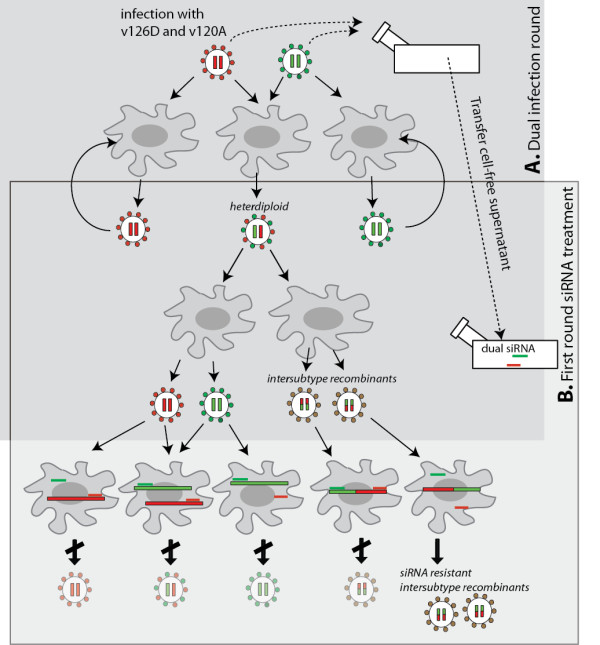Figure 1.

Schematic illustration on how siRNAs may enrich for intersubtype HIV-1 recombinants. HIV-1 v120-A and v126-D were used for mono- or dual-infection of U87.CD4.CXCR4 cells with equal or different MOI in this study. This figure illustrates how two siRNAs specific for the 5' end of v120-A env and 3' end of v126-D env might enrich for v126-D/v120-A recombinants after an initial dual infection and then propagation with siRNAs. During the initial dual infection (panel A), v120-A and v126-D are produced from monoinfected cells while a co-infected cell can produce a heterodiploid virus particle containing an RNA genome from each virus. If the heterodiploid virus infects and replicates in the initial dually infected cultures, a v120-A/v126-D or v126-D/v120-A recombinant virus can then be produced in the next round of infection but it is likely in lower abundance than the parental viruses. The five general types of virus, produced from initial dual infection, are then used to infect fresh cells treated with siRNAs (Panel B). In this round, siRNA120a primarily inhibits HIV-1 v120-A whereas siRNA126a would inhibit v126-D. In addition, both siRNAs in a single cell would block infection by a heterodiploid virus as well as v120-A/v126-D recombinant because these two types of viruses would be sensitive to one or both siRNAs. Because siRNA120a targets the 5'end of v120-A env gene and siRNA126a targets the 3'end of v126-D gene, a virus resistant to both siRNA would harbor chimeric env genome with 5' end/upstream region from v126-D and a 3' end/downstream region from v120-A. In addition the breakpoint would have to be between the two siRNA target sequences in the env gene.
